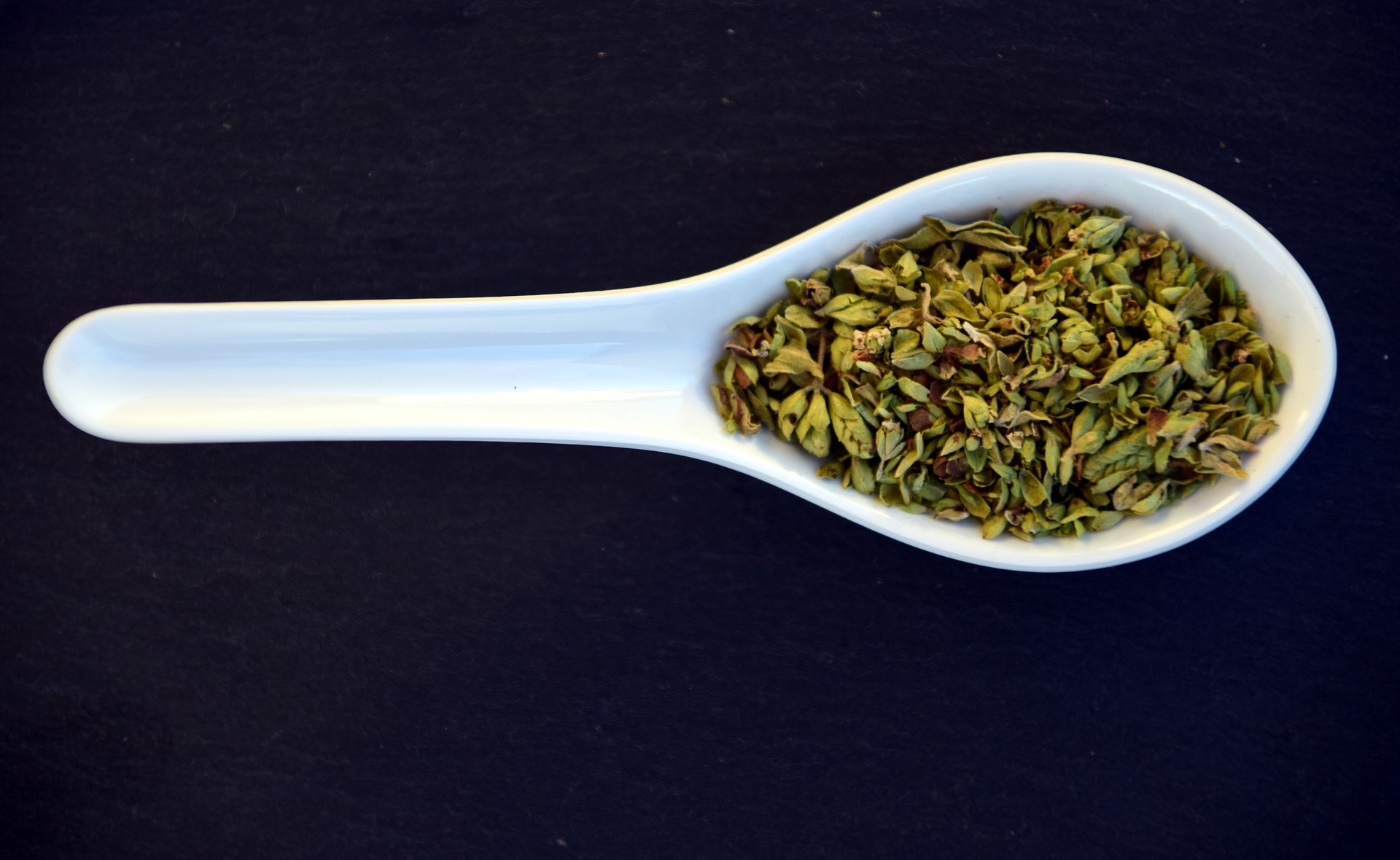Today’s herb we’re spotlighting is oregano!
In The Herb and Spice Bible, sweet marjoram is grouped together with oregano because they’re so closely related, so we’re going to be examining that herb as well.
Origin:
Oregano and marjoram come from the Mediterranean region and Northern Europe. They were popular in Greece, Egypt, and the Roman empire, before spreading to Asia, North Africa, and the Middle East.
Oregano can vary greatly depending on where it comes from – Mexican and Greek oregano, for instance, are more pungent.
Today the herbs are used in Italian, Greek, Turkish, and Mexican cuisines.
Fresh versus dried:
Surprisingly, oregano and marjoram are more flavorful when they’re dried than when they’re fresh. When dried, oregano compliments dishes without overshadowing the other ingredients.
Growing oregano:
- Needs well-drained soil.
- Does not need as much water as other herbs.
- Likes full sun.
- Needs to be trimmed back.
Drying oregano:
Fresh oregano (and marjoram) can be hung in bunches in a dark, well-ventilated place. Let them hang for a week, then rub leaves off the stalks.
Freezing oregano:
Although I’ve mentioned I have had good luck freezing oregano, I don’t really think you need to. Because oregano is so much better dried, you’re better off preserving the herb in that fashion, and not bothering with freezing.
Food oregano compliments:
- Eggplant
- Zucchini
- Bell peppers
- Roast beef
- Lamb
- Pork
Basil is the primary herb oregano goes with, most notably in pizza or Italian pasta dishes.
More recently, oregano has been used for marinating olives.

Comments
3 responses to “All about oregano (and marjoram)”
Interesting. I always assumed fresh rather than dried was always best. Who knew?
Hi Erin,
Thank you for linking to my post on How to Dry and Store Oregano and for crediting my photo. From one blogger to another, I appreciate your integrity! Happy blogging and feasting to you!
Thanks for saying so! You too!